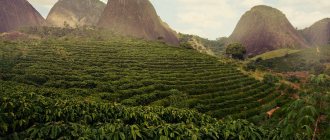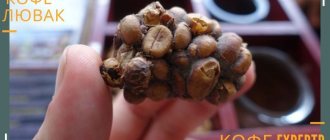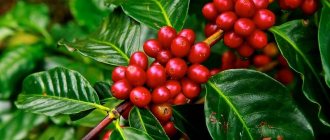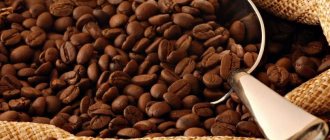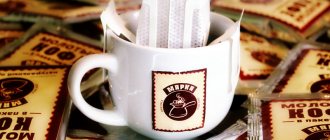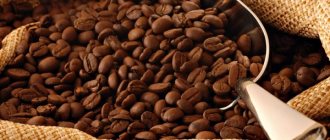Probably everyone knows that coffee is a berry, and if not all, then many. Coffee grows in regions with a tropical climate in mountainous areas at altitudes from 700 to 2300 meters above sea level. Before getting into our cup, coffee goes through many stages: ripening, berry picking, processing, fermentation, sorting, roasting. Each of these steps on the path from plantation to cup of coffee is very important, and control over each of them is critical to the final product. Today we’ll talk about methods of processing coffee berries and the effect of these methods on the taste of coffee.
Before you get the grain ready for roasting, it needs to be cleared of pulp and dried. If you dry grains without peeling the berries, the pulp will give up some of its flavor and sugars to the grain. This process is called fermentation. The taste of such grain becomes complex and rich, and if already purified grains are dried, the taste acquires a more unambiguous and simple shade with fewer components. And for each type of coffee, several processing methods have been developed.
There are two main methods:
- dry (natural) method,
- wet (washed) method.
There is a third method that is not widely used: the half-wash method (honey process).
Washed coffee processing
Washed coffee processing is used mainly in Latin America and some areas of East Africa. It requires cleansing from the top protective layer of the berry and from the adhesive substance covering the skin of the grains themselves, using friction, fermentation and water. After picking, the berries are taken to a water mill. Next, the grains are pulled out of the berry itself using special equipment. At this stage, the grains are covered with a sticky liquid, which includes sugar and alcohols. This sticky substance affects the sweetness, sourness and aroma of coffee. Once the grains are separated from the berries, they are placed in fermentation tanks for 12 to 24 hours depending on temperature, although producers have begun experimenting with fermentation times to create new flavor profiles. For example, prolonged fermentation means that the beans absorb more sugars and therefore taste sweeter. After fermentation, the sticky substance breaks down and leaves the beans covered only with coffee “parchment”—the skin. Now the grains are ready for washing. This is done in tanks with clean water. At the exit, the grains harden, which means they are ready for drying. The grains are dried for approximately 10-22 days, during which they are turned regularly. This slow drying is considered optimal for obtaining balanced coffee. Washed processing focuses only on the grain, it reveals what is inside it, but not what is outside. Many believe that this method reveals the true character of the variety like no other, which is why most specialty coffees are processed this way.
Wet method of processing coffee beans
In the case of the wet method, the grains are cleaned from pulp using cylinder or disc-shaped mechanisms. At the same time, the fruits are pressed without damaging the grains that jump out from there - they are covered with a layer of mesocarp. The resulting grain is washed in circular or serpentine cyclones. In this case, high-quality coffee beans immediately settle, and diseased ones float up, as a result of which they, along with pieces of fruit peel, are easy to remove. Then the initial selection of coffee beans is carried out.
Insoluble mucus that adheres firmly to the grains is removed enzymatically. This is done in pools where the grains are mixed with an enzyme solution, initially covered in a meter-long layer.
Fermentation can last up to a day. In this case, the remaining mucus and pulp of the fruit are completely dissolved and removed, and the grains themselves are washed with purified water. Now they are ready to dry.
The combination of wet processing techniques with drying (in some cases) and subsequent roasting makes it possible to obtain a special quality for the processed natural coffee. But the wet method requires a large consumption of water - approximately 100 liters per 10 kg of coffee beans extracted. For countries such as Brazil, Yemen and Côte d'Ivoire, mechanical cleaning with rinsing is very expensive. It is forbidden to use the same water - the coffee beans may acquire an acidic taste comparable to onion.
Using the wet method with inept and careless handling can ruin the entire batch of coffee, which will immediately affect the profitability of businessmen and coffee companies whose main activity is the production of high-quality coffee. For example, coffee beans purified by the enzymatic method need to be completely unloaded. Even a small batch of grains not removed from the pool will undergo secondary cleaning. They do not stand out in any way outwardly, and it is impossible to detect or sort them. But during subsequent roasting, they release that same “onion” smell, “fumigating” with it the rest of the grain, which has undergone only a single (normal) cleaning with enzymes.
Dry coffee processing (natural)
The most ancient method of processing coffee. Traditionally used for large-scale coffee production due to low cost, such as in Brazil, or due to the limited amount of water in the region, such as Ethiopia. After harvesting, the coffee berries are dried in the sun. In large-scale production, they are usually placed on concrete or brick surfaces, sometimes on the ground to absorb moisture. For this reason, when dry processed, the coffee beans will have more defects - even an earthy smell due to drying on bare ground. Washed coffee has always been more expensive due to its purity and balance, but more and more producers are giving preference to naturally processed beans because of the scope for flavor experimentation. When carried out correctly, dried on absorbent surfaces and turned regularly, natural processing can produce a unique coffee taste with hints of strawberry, mango and blueberry in the finish. Drying occurs without clearing the top layers, which allows the berry to ferment naturally. The grains absorb all the substances contained in the berry. As a result, the brewed coffee has an unusual flavor profile. After drying, the berries resemble raisins in appearance, and the grains are cleared of their outer layers. Brewed coffee will have a pronounced sweet taste.
Dry, natural, natural process
Drying is the oldest method of processing coffee beans, which began to be used in Ethiopia and Yemen, where there are big problems with clean water for washing, but there is a lot of sun, which dries the fruits and prevents them from molding.
Workers harvest the coffee cherries, which contain the coffee bean, and dry the crop in the sun for about a month. Large plantations usually have special drying machines, which speeds up the process. Once the cherries have reached the correct moisture content, the coffee will be processed to remove the skin and pulp. The only remaining part of the original cherry will be the beans.
Dried grains must be sorted manually, since otherwise it is impossible to remove spoiled berries. Previously, such unsorted coffee was considered low-grade, but today many companies produce elite varieties using this method, carefully selecting whole, high-quality coffee cherries.
Shades of taste and aroma
During the drying process, the coffee beans absorb the flavors of the fruit pulp and this produces a more intense sweetness.
- Flavor notes – strawberries, blueberries, raisins, figs;
- The aroma is slightly winey, strong, sweet.
The advantages of dry processing include sweetness, fruity tones, and low acidity. But wet weather or lack of stirring can still cause the beans to taste slightly musty.
Honey (semi-washed coffee processing)
When semi-washed, the coffee tastes literally honey-like, as if brown sugar had been added to a cup of coffee, although the name comes from the similarity in appearance and consistency of the beans to the consistency of honey. This method sometimes confuses roasters and consumers because it varies depending on the country of origin: it is usually somewhere between a washed process and a dry process. Hani processing is a hybrid process that is open to “author’s” interpretations. In Brazil, for example, research was conducted to find a way to process coffee that would use less water than washed coffee, but would be more resistant to defects than natural coffee. This is how they began to use khani, in which the top peel and partly the sticky substance are removed, after which the grains are sent for drying. The coffee turns out sweetish, as with natural processing, while adding a slight sourness to the taste. Central America and El Salvador pay more attention to experiments, so semi-washed processing uses a scientific approach and removes a strictly defined and verified amount of sticky liquid. This precise process of honey processing creates distinctive coffee flavors. The drying process becomes especially important here because the risk of mold and insect damage becomes greater.
Beer and coffee: lactic acid fermentation
Ashley Rodriguez on Good Beer Hunting for Uppers & Downers describes one thing beer and coffee have in common: lactic acid fermentation . Pivo.by publishes a translation of the material.
Illustration: Cooper Foszcz
Just an hour's drive from the Colombian capital of Bogota lies a coffee farm called La Palma y El Tucán. Owners Elisa Madrinan and Felipe Sardi returned to Colombia in 2011 in search of a farm that would be ideal for realizing their dream of creating completely unique and unusual coffee varieties. They collaborated with hundreds of small local farmers and experimented with different processing methods to ultimately produce some of the most highly prized coffees in the world.
In 2020, they sold several experimental coffees to Springdale, Arkansas-based roasters Onyx Coffee Labs. They, in turn, took part in the United States Coffee Championships competition, held in Seattle (Washington), winning in several categories. Their success was brought by the so-called “lactic acid fermentation coffee”, placed in anaerobic tanks for 60 hours for purification. This coffee was purchased for $43.10 per pound. At that time, the average market price for coffee was $1.22 per pound.
Not bad for bacteria that cause milk to sour.
We are pleased to present you the Uppers & Downers project, dedicated to exploring the common thread between beer and coffee. Good Beer Hunting hosts an annual event of the same name - along with smaller events - in cities such as Chicago, London, Atlanta, Seattle and many others. Their goal is to demonstrate the vast possibilities that the union of beer and coffee gives us. Thanks to these events, we hope to gain experience and knowledge that will be useful to us for further research on this interesting topic.
The task is not easy, because I work in the coffee industry. After spending a year teaching algebra to eighth-graders in New York City with little success, I accepted the first job offer that came my way and ended up working at a chain coffee shop in Times Square. Eight years later, I am now the online editor of Barista Magazine, the leading publication in our industry. I write about coffee for a living and sometimes compete in coffee competitions, and I also host a podcast about everyone's favorite caffeinated drink called Boss Barista.
So, in the coffee industry they know very little about lactic acid fermentation , and about fermentation as such. When you tell clients that coffee can be fermented, many people simply look at you and cannot associate the taste of coffee with the taste of other fermented foods, such as cheese or wine.
On the other hand, industry representatives themselves are not far behind them. We have yet to understand the full importance of fermentation, as scientists have only just begun to study the effects of various bacteria and yeasts on the taste of coffee.
When I turned to experts, many of whom are considered leading researchers in the field of coffee fermentation, most of them could not give me a definitive answer. “Lactic acid fermentation exists, but little research has been done on the use of lactic acid bacteria in coffee production,” says Nathalie Seczkowski, director of research and development at Lallemand, a French supplier of wine yeasts and bacteria. “Coffee fermentation is just getting started, and those using it don’t always take the necessary precautions to add select active dry yeast.”
To better understand the coffee fermentation process, let's first look at the coffee growing process. Coffee is the seed of coffee berries that grow on shrubs in regions where it is hot during the day and cool at night - mainly near the equator. To extract the seeds, you must remove all the layers surrounding them. This process is called processing, which can be done in different ways. We are interested in the stage at which particles of insoluble mucus that are tightly adjacent to the grains are removed - as in a peach pit, for example.
This mucus contains a large amount of sugar, so during the fermentation process, yeast and bacteria simply eat it. (This is not the only type of fermentation of naturally processed coffee, but we will cover that in another article.) For a long time, no one paid attention to exactly what bacteria and yeast were involved in this process - it was known that they were able to clean the beans from mucus, and the possible impact of different strains of yeast and bacteria on the taste of coffee was not taken into account.
In 2012, Peter Guiliano, director of research for the Specialty Coffee Association, conducted an experiment with bacteria in the processing of coffee at a farm in El Salvador and found no difference in the quality of the product. According to his report, "in this trial, microbial treatments did not have a significant effect...on coffee." Five years ago, we not only knew nothing about yeast and bacteria, but we were also very mistaken about their effect on coffee.
Beer, on the other hand, has served us well, albeit by accident. Beer was brewed many centuries ago, before modern refrigeration technology was invented, before we began to understand the importance of sanitation, and before the discovery of microorganisms. In those days, strange tastes in beer were not uncommon. Brewers could not get rid of bacteria, including lactobacilli, responsible for lactic acid fermentation, and therefore almost all beer had a tart, pungent aftertaste.
With the invention of pasteurization, everything changed - but not completely. Traditionally sour beers such as lambics and Berliner Weisse persisted, but it wasn't until the late 1990s that more breweries began intentionally producing tart, wild-fermented beers. When talking about the history of sour beer, beer journalists list specific varieties and breweries, but personally it seems to me that this is only fragmentary data that does not reflect the whole picture. I happened to work at a brewery once—just for a short time—and the first question I had was whether we had sour beer.
“There are several ways to add lactic acid to beer,” says Sam Gilbert, founder of Temescal Brewing in Oakland, California. — You can simply take ready-made food grade lactic acid - this is a fairly common method, especially among large breweries trying to keep acidity levels under control. But this method is usually viewed with skepticism. Most often, lactic acid is produced using lactic acid bacteria. Both Lactobacillus and Pediococcus produce lactic acid, and within both genera of bacteria there are many different strains to work with.”
Despite the many ways to use lactic acid in beer, many brewers simply don't bother. “It’s no secret that 99% of brewers consider lactobacilli to be harmful microorganisms,” says Jay Goodwin, co-founder of The Rare Barrel brewery in Berkeley, California.
Goodwin Brewery only makes wild fermented beer. Along with more traditional beers added with Brettanomyces yeast or fruit, they also create lactic acid fermented beers.
“We try to give every drink a unique flavor profile,” explains Goodwin. “Lactobacillus, when combined with wild yeast and other bacteria, can create a wide range of fruity and floral aroma and flavor notes without adding fruity or floral ingredients to the beer.”
Speaking of lactobacilli, brewers consider them an ingredient that can be used to create a recipe, albeit quite complex, but capable of becoming the basis of something unique and interesting. “When creating a recipe, I always think about the balance of ingredients, and sourness in this case is a very useful tool. First of all, it compensates for the sweetness, and some beers need this. Often, brewers try to do this with bittering, says Gilbert. “If done right, lactic acid can help create incredibly refreshing beers.”
Illustration: Cooper Foszcz
Coffee experts, on the other hand, are just beginning to talk about the benefits of bacteria in coffee production. “I remember when I first heard about lactic acid fermentation, I thought it was a joke,” says Ria Neri, founder of Four Letter Word Coffee in Chicago. (They also have a coffee roasting facility and cafe on the island of Burgazada off the coast of Turkey.)
Neri visited the La Palma y El Tucan farm at the very beginning of its activities. She is one of the few entrepreneurs who supplies her products in the United States. “When I describe their coffee, its taste and texture, I compare it to pineapple yogurt,” she says.
Perhaps Neri's skepticism stemmed from her co-ownership of Whiner Beer Co., also based in Chicago, which specializes in barrel-aged styles such as saison that are native to Belgium and France. “They've been drinking sour beer in these countries for centuries,” says Brian Taylor, Rea's partner at Whiner, who worked at the Goose Island brewery when the latter released a variety called Juliet, one of the early American wild ales that is now widely enjoyed. success.
Although the tradition of making sour and wild beers has been around for centuries, Taylor is quick to point out that they are still new in the United States. “In 2007, when the first version of Juliet came out, it couldn’t sell for several months because people thought the beer was spoiled,” he recalls.
Now in 2020, almost half of Whiner's offerings are sour varieties, and many of them are created using lactobacillus. “Lactobacillus produces sour beer with a very well-balanced flavor,” says Taylor.
Taylor and Neri (who created two lactobacillus-fermented coffee sour beers for Uppers and Downers in 2020 as part of a Case Studies series) credit this growth to increased consumer literacy and availability of sour beers. not a temporary fashion that will soon pass.
“For a very long time we were taught to drink light, sometimes even tasteless lagers,” says Neri. “We like the sweet and sour taste [of sour varieties] because we like extremes,” Taylor adds. “Many people think they don’t like sour beer, but that’s because they haven’t tried the good ones.”
If sour and wild beers are to continue to hold their own, lactic acid fermentation in coffee will also continue to evolve, although there is much we still don't know about it. Even the La Palma y El Tucan farm, which uses the lactic acid fermentation process, does not have detailed information about exactly how it happens. “We know that fermentation processes are incredibly complex and involve many variables that can influence the final result,” says Felipe Sardi, one of the owners of La Palma y El Tucan.
In 2020, Sardi and his colleagues asked researchers at the Department of Chemical Engineering at the National University of Colombia to analyze the fermentation processes used on the farm. “To determine differences in the dynamics of lactic acid and acetic acid fermentation processes, both processes were monitored, measuring the amount of organic acids and sugars and tracking the population of lactic acid bacteria, fungi and yeast.”
Currently, the prevailing view in the coffee industry is that the use of bacteria during processing can help improve the overall quality of coffee. “We believe that lactic acid bacteria can influence the character of the finished product, but we have yet to study exactly what role they play, which bacteria are of particular interest, and how to use them to benefit our business. There is still a lot we don’t know,” says Nathalie Seczkowski from Lallemand.
“By working with certain coffees, I can increase their score by 5 or 6 points,” says Lucia Solis, a former wine and fermentation specialist. She now works with coffee farmers to improve their processing technologies. Solis is referring to the coffee rating scale developed by the Coffee Quality Institute. As a rule, coffee varieties that score at least 80 points receive the specialty class. With each point, the price for this type of coffee increases.
“They tend to be relatively low-scoring varieties—and I can turn a 76 into an 82,” she says.
Solis notes that despite the potential of yeast and bacteria to add value to coffee, we are still far behind our peers in beer, wine and other fermented products because coffee does not require a fermentation process. “Because of this, the fermentation process has a different historical understanding,” she explains. “The potential impact of fermentation on coffee can be very different, some of it minor.”
One of the reasons we don't know about the effects of yeast and bacteria on coffee is because we don't control enough variables. Coffee goes through many stages before it reaches your cup—harvesting, processing, sorting, shipping, roasting—and pinpointing one specific variable that influences the final flavor is no easy feat. The final taste of coffee can depend on many factors, but Solis highlights one of them, the least obvious, but very important: water.
“In the case of beer they say that water is everything. In the case of coffee, it’s not even customary to talk about water,” notes Solis. She says many farmers simply have no choice - they have to use the water they have access to. “Typically, this is water from a nearby river or that has fallen as rain.”
Water serves as the medium in which the interaction between coffee and bacteria occurs. Not all coffees are placed in water during fermentation, but most of the coffees you drink will be cleared of mucilage using water. Coffee lovers write a lot about what kind of water should be used to prepare this drink, while few people discuss the water used at the processing stage, because it is often the water that is on hand.
Cleanliness is also an important aspect. “Beer production plants, as a rule, are perfectly clean. Lower pH levels and higher alcohol content require sanitation to be taken seriously, Solis says. — On coffee farms, the requirements for cleanliness are generally not as strict, since the finished product is roasted. We believe that purity only matters at the end of the coffee’s life cycle—when we brew it and drink it.”
Because of this, it may be impossible to determine what effect yeast and bacteria in the environment have on the quality of coffee, although some believe they can. “In the case of coffee, few people know what strain of yeast was used to ferment it,” Solis says. “When someone talks about an acetic acid or lactic acid reaction, it doesn’t mean they’ve done any testing—it’s just their guess.”
Solis sees huge potential in inoculating, or introducing, known strains of yeast and bacteria into coffee samples during processing, which could eliminate the guesswork for producers. “The yeast I'm working with [currently] has protective qualities,” she notes. — Fermentation begins already at the coffee harvesting stage. Yeast and bacteria are everywhere - in the water, in the fermentation tanks, and if these tanks are not cleaned properly, who knows what will accumulate in them.”
Working with farmers, Solis tastes their coffee, identifies characteristics it lacks (such as sweetness or acidity), and selects a strain of commercial yeast that will help address that issue.
Inoculation can also protect coffee from common problems encountered during the fermentation process. Imagine coffee that tastes like vinegar or kombucha and you'll see what I'm talking about. This can be a major hurdle, as having just a few over-fermented or spoiled beans in a few hundred bags of coffee can result in a farmer being unable to competitively price all of his coffee. To avoid this, all you need to know is how yeast works. “Using yeast is like a medical revolution,” Solis says. “A lot of things changed when people just started washing their hands—there was no innovation or radical new idea behind it.”
Illustration: Cooper Foszcz
So what is the protective function of yeast? In their quantity. Solis can't determine the exact volume of individual strains of yeast or bacteria present in a fermentation tank at any given time, but when inoculated she introduces approximately 6,000 times more yeast colonies than would be found naturally. She may not know for sure what bacteria or yeast is already present in the tank, but her yeast wins due to quantity. To make it clearer, Solis draws a simple analogy. “Imagine Arnold Schwarzenegger and I fighting. Of course, he will defeat me. What if there are a thousand people like me? Then, of course, we will win.”
Solis can get a predictable inoculation result because she knows the properties of the yeast she inoculates and ensures that her yeast will compete with other unknown strains of yeast and bacteria. “A whole army is rising up to defend coffee.”
In the coffee world, it is believed that the quality of the product is inherent in the bean, and the task of farmers, roasters and baristas is to preserve it. Simply put, the main thing is not to ruin the coffee. At the same time, given what happens to the coffee after it's harvested, it may not be as easy as it seems. Inoculation allows you to preserve the existing taste, but its benefits do not stop there. While Solis uses yeast to protect her coffee, she is also enthusiastic about exploring the potential of using it to create new and more interesting flavors. “Through the fermentation process, you can create new flavors that can only be achieved this way,” she says.
And yet we still know very little about how this happens. Solis says that in his activities he is guided by accumulated experience, skills and intuition. There are no guidelines, and changing long-established fermentation practices used on farms will be difficult, especially as the average market price for coffee continues to hover around a dollar per pound. (At the time of this writing, it was $0.98 per pound). Despite examples of how yeast can transform the taste of coffee (and thereby increase its value), there is very little information available on this subject. Farmers like Felipe Sardi are the exception rather than the rule.
In the case of beer, the situation is completely different. Because yeast and bacteria are an integral part of the beer-making process, we've long known that they can help create interesting new beers. Lactobacilli are already practically considered one of the common ingredients of beer - they can change the taste of the drink and create something unusual. Of course, some may not like the effect that lactobacilli (like any other ingredients) have on beer. At the same time, many brewers we spoke with note that you can only fall in love with sour beer if you throw away all your stereotypes and are not afraid to try something new.
The opportunities that lactic acid fermentation presents for beer and coffee production have yet to be realized. At this time, we are unable to analyze in detail what effect bacteria have on each of the drinks, and in particular, determine the differences between the use of lactic acid fermentation in each case. When fermenting beer, it is used to give the drink new, unusual and tart shades, while when fermenting coffee, it is used to ensure the stability of the process - and so far insufficient accurate knowledge has been accumulated in this area.
As research progresses, opportunities will grow to bring these divergent paths closer together, so that we may one day be able to directly influence the taste of coffee through lactic acid fermentation, or use it in the brewing process to ensure consistent quality. Why am I saying this? Besides, we may have seriously touched on the topic of lactic acid fermentation of beer and coffee for the first, but definitely not the last time.
Wet Hall (Giling Basah)
This processing method is commonly associated with Indonesia, where Giling Basah translates to "wet grinding". During this treatment, the coated coffee bean is removed from the berry and then partially dried in the sun until the water content is reduced to 30-35%. The casing is then removed and drying continues until the water content is low enough to avoid mold. After this, the grains become greenish or blue in color, which distinguishes Indonesian processing from all others. This process is not without its challenges: by removing the protective layer at an early stage, the grains may be exposed to insects during the most critical stages of processing. Beans processed in Indonesia are usually associated with woody, earthy or pungent flavors, which are considered to be the result of this unique processing process. Some will admire such shades, while others will consider them a drawback.
Coffee sorting and cleaning
Having gone through the first stage of coffee processing, which consists of careful selection, the coffee raw materials received at the plant first need to be blown and ventilated. First of all, particles of soil, sand and pebbles that got there during primary processing are excluded from the composition of the grain.
Next, the grain undergoes a magnetic test: impurities of iron, cobalt and other metals that have entered there are removed.
Further cleaning consists of cleaning the coffee bean from the keratinized shell and the silvery intermediate layer. The latter is done by polishing them. Before the grains are sent for roasting, they must be sorted using several sieves, the mesh size of which is the same as or slightly larger than the size of the grain. The fact is that not all coffee beans are the same size. Small and large coffee must be separated from each other to give the produced coffee its original presentation.
To ensure that the taste and smell of coffee remains high-quality (leading coffee suppliers carefully and scrupulously “keep their mark”, avoiding defects), they remove blackened beans. This is done both manually (the human factor of selection is also no less important; a machine cannot completely replace the final control line) and with the help of special technological equipment. This is what “increases” the price of truly high-quality (and not “consumer consumption”) coffee, but the highest quality of the released product remains guaranteed and unchanged.
Experimentation and innovation: the future of coffee processing
Traditionally, coffee countries have favored one processing method. For example, in Rwanda and much of Central America, washed processing has historically taken hold, while in Brazil, honey or natural processing has been more common. This is now gradually changing, thanks to the increasing demand for specialty coffee. More and more producers are trying other processing methods when natural and climatic factors allow. For example, in Nicaragua, Guatemala and Rwanda, many use honey and natural processing. There's more to it than simply choosing a processing method: some are trying fermentations without oxygen, while others are looking for catalysts to speed up fermentation. Also, many are experimenting for environmental reasons and trying to process grains with minimal use of water. The coffee processing process is not an often covered topic, but it is a fundamental part of the coffee industry. Next time you choose Vietnam's Lam Dong washed process or Brazil's Santos dry process, you'll know what to expect.
Halling (flaking)
Dried beans are kept in bags for 6–8 months, and some expensive varieties of Yemeni coffee – up to 3 years. To prevent the grains from losing moisture, the bags are covered with plastic film. If after this period the moisture content in the grains is above 11%, they are dried.
When the grains have rested, they are subjected to halling - peeling off the parchment shell. The only country where wet halling (wet halling, or giling basah) is practiced is Indonesia. There, the grains, cleaned by washing, are dried a little, then the parchment shell is removed using a machine, and then finally dried. Experts say that with this method of processing, coffee beans acquire an earthy taste.
Cleaned coffee beans and husks
Try our coffee
Mix of grains
Espresso coffee
Blend of 100% Arabica beans. The aroma reveals notes of roasted peanuts and hazelnuts, while the taste is dominated by dark chocolate and walnuts. Soft aftertaste of cocoa and burnt sugar.
Peru
Coffee "Chanchamayo"
Rich and strong coffee with notes of bread in the aroma.
Brazil
Coffee "Santos"
The aroma is dominated by spices and cocoa. The soft nutty-chocolate taste is offset by a slight sourness at the end.

